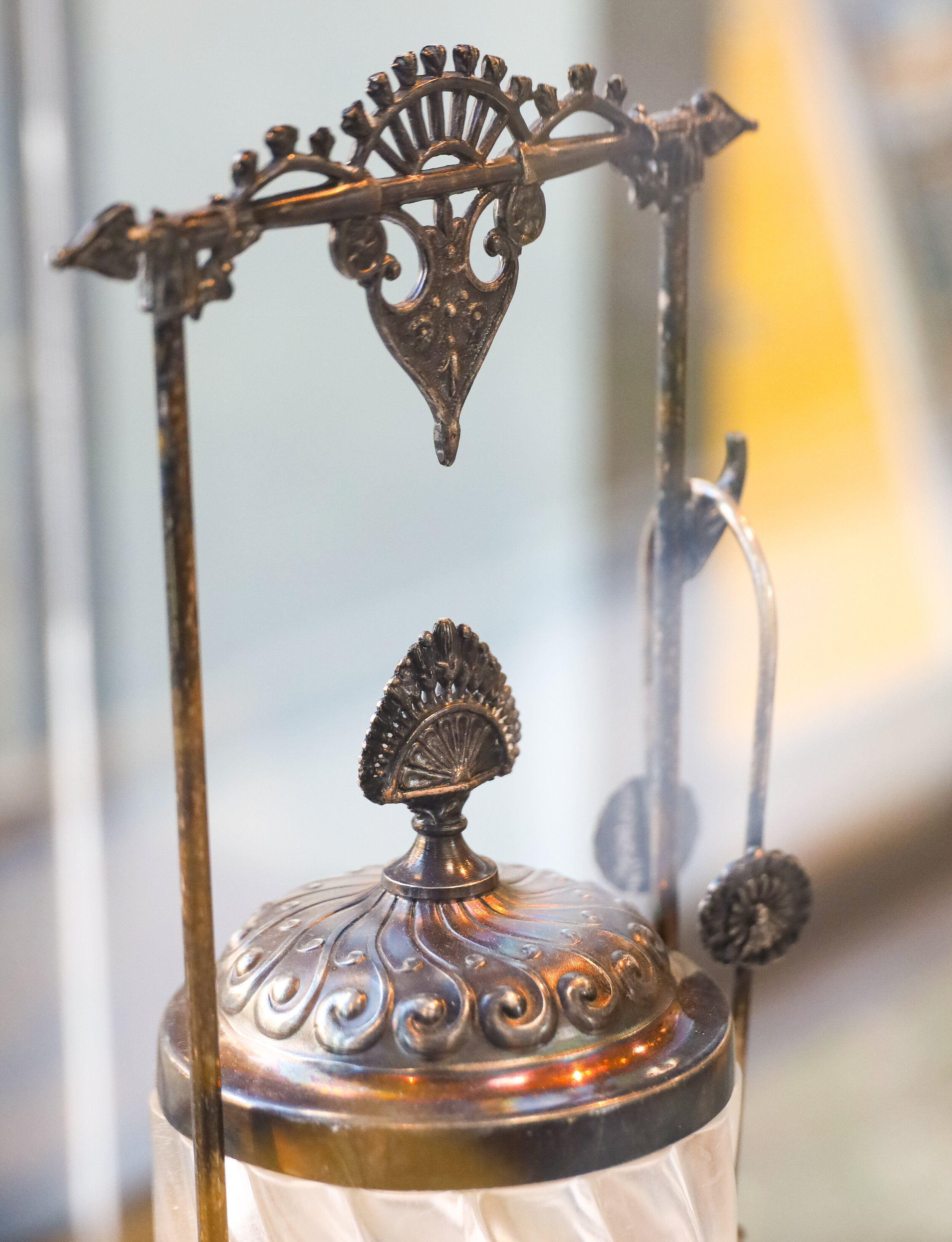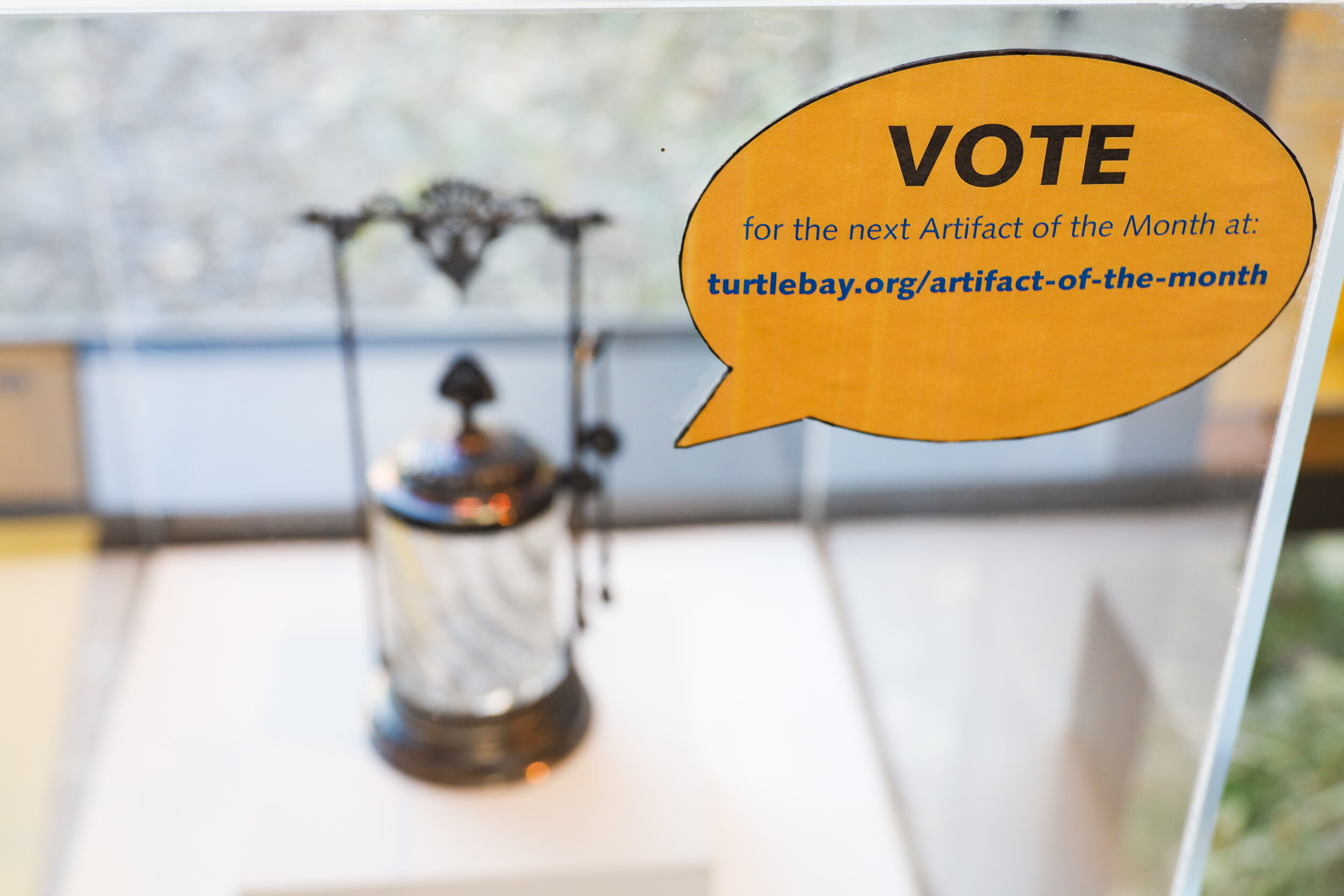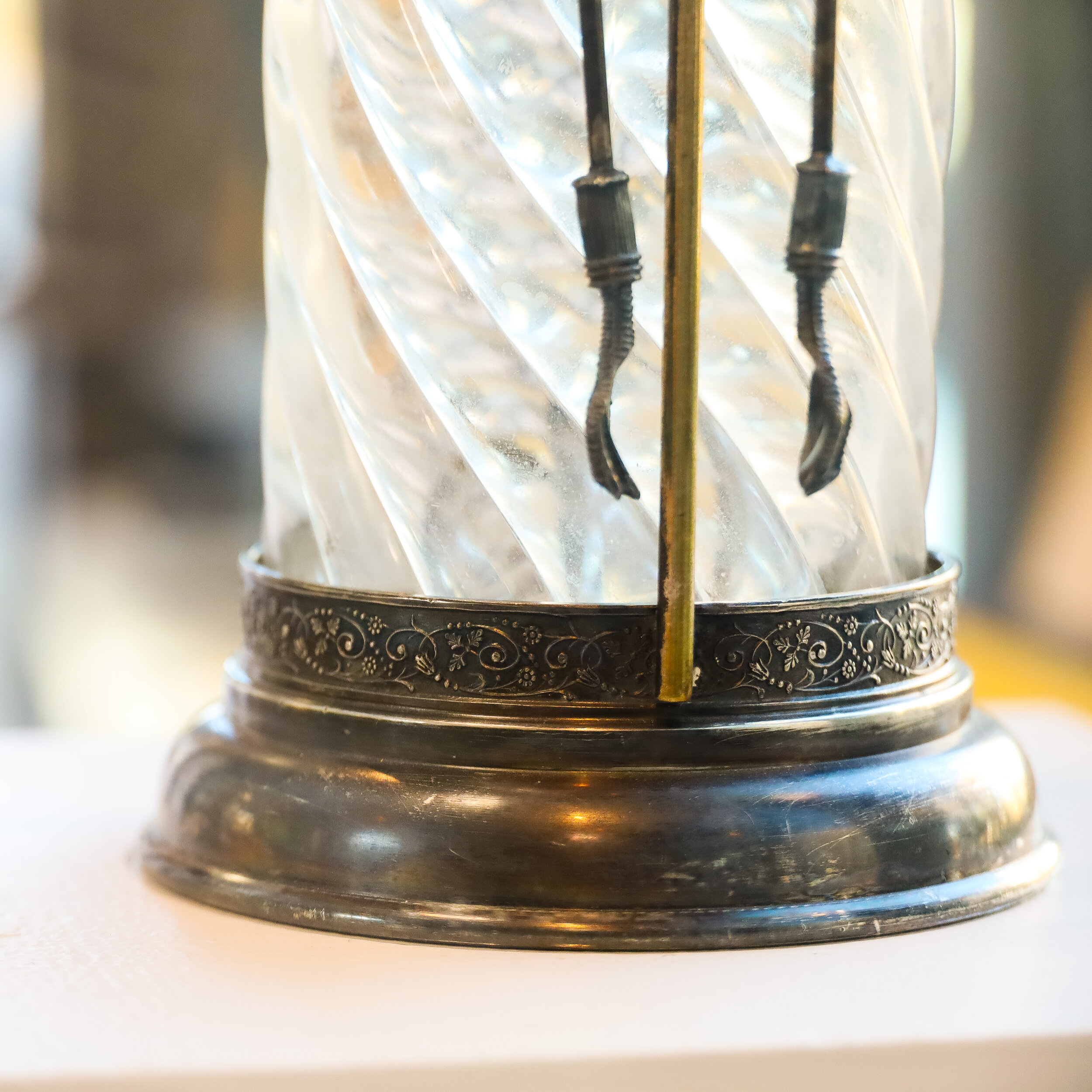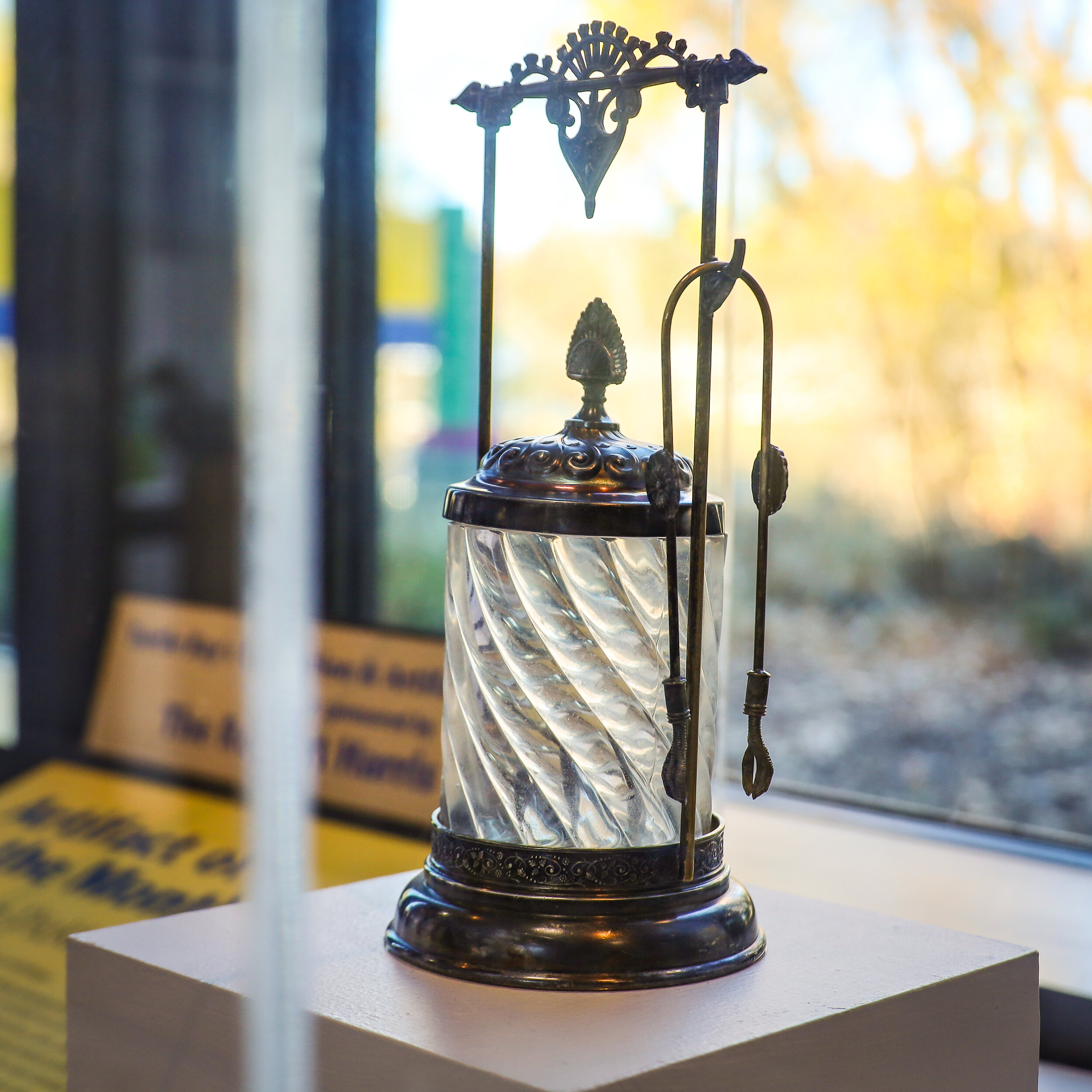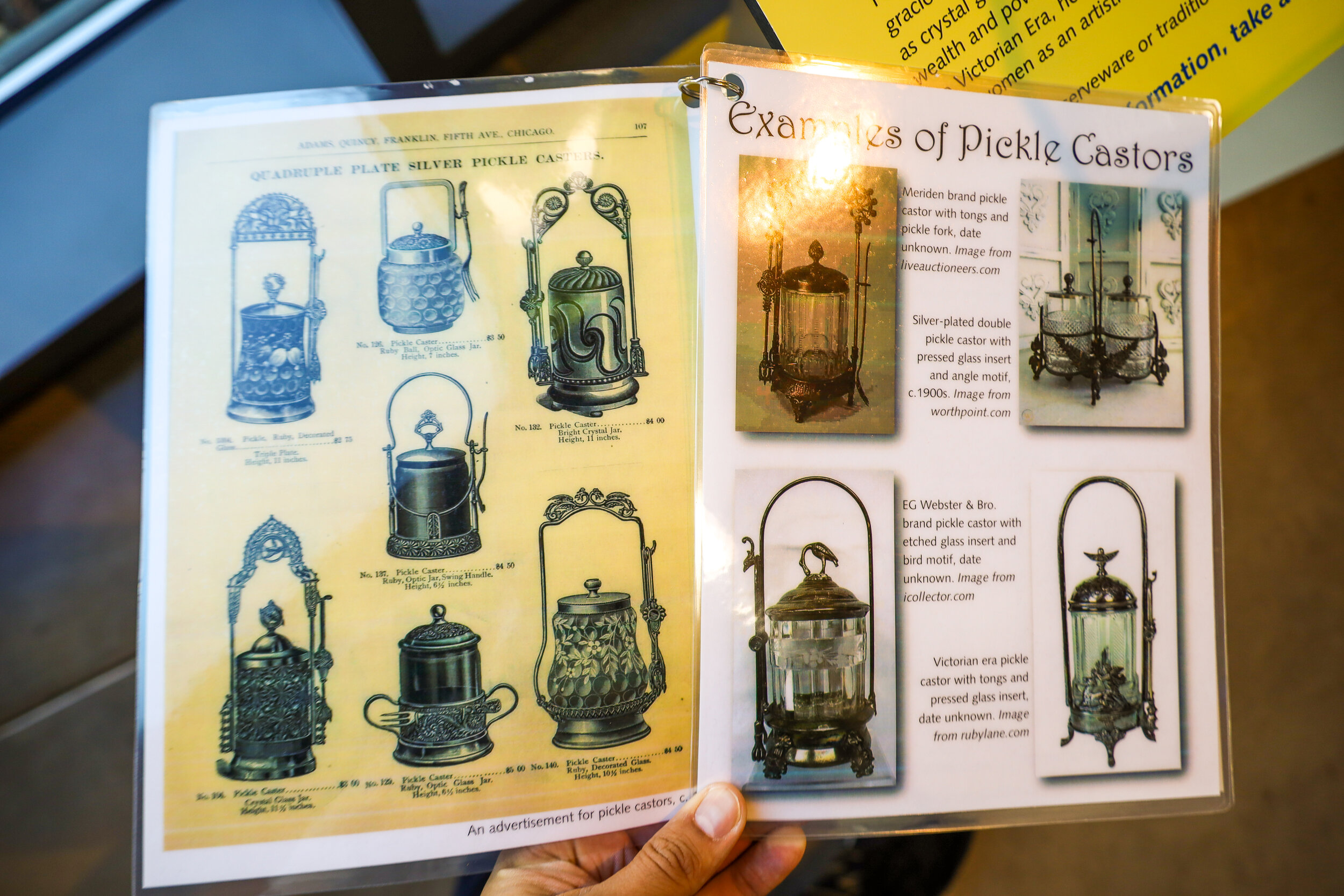How providential that we are able to present this perfectly pleasing yet peculiar pickle paraphernalia! This is not your ordinary pickle jar! In fact, it probably didn’t hold the type of pickles we are most familiar with today – those delicious, tangy, former cucumbers. Before the ubiquity of refrigeration, jams, jellies, pickles and chutneys preserved produce for future consumption. Victorian pickle recipes included sweet pickled cantaloupe, pickled onions, cauliflower, cabbage, radish pods, nasturtium seeds, walnuts, as well as the more familiar gherkins and cucumbers. Spiced or pickled fruits such as sour plums, blackberries, cherries, and pears were also popular. Yum!
The Victorians are renowned for combining practical function with beautiful form. Even pickle servers weren’t safe from their romantic and lavish aesthetic. The glass jar inserts came in a variety of sizes and styles and fit in elaborately designed silver-plated frames with matching lids. The glass could be patterned, etched, colored, or frosted. Many pickle castors came with tongs or a pickle fork for serving and became increasingly elaborate as they gained popularity. By 1860, their ornate decoration included everything from flowers to birds to gargoyles. Their popularity peaked in the 1890s then quickly fell out of fashion. Our pickle castor can be dated to the 1870s to 1880s – the height of pickle castor popularity – by the maker’s mark of Albany Silver Plate Co. stamped on the bottom of the silver-plated frame. Albany Silver Co. began in the 1870s and was bought out by I.J. Steane and Co. around 1886.
For many affluent Victorians, an elegant table was a way to show wealth and impress guests, while also conveying graciousness as a host. Tables and sideboards were adorned with glass, candles, tapestries, fruits, and foliage, as well as crystal glassware, fine cutlery, and china. Even something as seemingly innocuous as a pickle server broadcast wealth and power, signaling that the host could afford to employ servants to prepare its delicious contents. Later in the Victorian Era, household duties such as preparing food and entertaining were seen by some middle and upper-class women as an artistic and liberating art form. They were the Martha Stewarts of their day.
What special serve ware or traditional foods do you have on your holiday table?
To learn more about this artifact, visit the Artifact of the Month exhibit inside the Museum entrance at Turtle Bay Exploration Park. You can also click the link below for the Artifact of the Month webpage for more information on the exhibit and past blogs.
Cast your vote for the next Artifact of the Month below…





